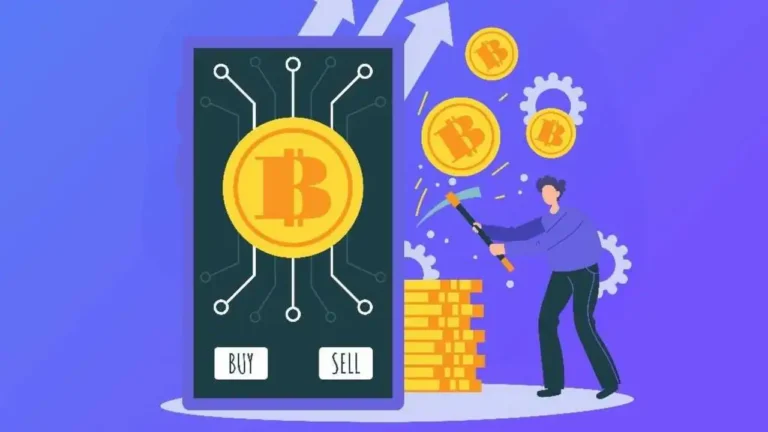7 Golden Moments to Buy Solana: Your Profit Calendar for the Year!
If you’ve been hanging around the crypto space for a while, you’ve probably noticed something interesting—some coins seem to have their own “schedule” for pumping hard.
Solana (SOL) is definitely one of those coins. It doesn’t just move up or down randomly. In fact, SOL shows a pretty clear seasonal pattern. Some months it shines bright, while in others… well, not so much.
Thanks to data from Aiolux (updated as of July 2025), we now have a sharper lens to look through. Instead of trading on vibes and FOMO alone, you can actually craft a smarter strategy by simply checking the calendar.
Quick Facts You Need to Know
Hide-
January: +22.7% avg return, 60% win rate – fresh capital flows in.
-
March: –15.9% avg but +22% median – big dip, big bounce.
-
April: +18.5% – ideal accumulation before Q2 pops.
-
July: +5.4%, 100% positive months – steady and reliable.
-
August: +67.8% – explosive, but risky.
-
October: +17.0% – Q4 momentum starter.
-
November: +13.9% – pre-holiday hype kicks in.
We’re talking monthly average returns, how often each month ends green, the median performance, and the wild range of best/worst returns.
January: New Year, New Gains
January always brings a fresh vibe—not just for New Year’s resolutions, but also for markets. Historically, SOL posts an average return of +22.7%, with 60% of the past five years closing in the green. That’s not a coincidence.
This spike often happens due to something called institutional repositioning. Big players like hedge funds and venture capital firms typically rebalance their portfolios at the start of the year—and crypto often makes the cut. With new liquidity flowing in, SOL tends to get a lift.
If you’re looking for a solid entry, January might be your golden window. Just don’t FOMO in—watch the volume trends and support levels to time your move wisely.
March: Volatile but Full of Opportunity
March might look like a horror story at first glance. The average return is a harsh –15.9%. But hold up—the median return is actually +22.0%.
That means while March can be rough, it’s also packed with chances for a strong comeback, especially in the second half.
The early-month dips are often caused by profit-taking after January-February rallies. But toward the end of March, things tend to bounce back thanks to roadmap updates, airdrops, or staking campaigns that reignite market interest.
If you’re into buy-the-dip strategies, March can be a goldmine—just stay patient and watch the market closely.
April: Calm Before the Breakout
April often flies under the radar, but that’s exactly where hidden gems lie. With an average return of +18.5%, April is usually fueled by DeFi project movements and network upgrades in the Solana ecosystem.
Why does April have so much potential? Many Solana-based projects release major updates or revamp tokenomics around the end of Q1.
Naturally, markets start responding in anticipation of a strong Q2. According to Analytics Insight, April is a prime “entry point” before a likely surge.
For swing traders, April is an ideal time to start stacking SOL—find a consolidation zone, lock it in, and prep for the breakout.
July: Quiet but Consistent Profits
Summer tends to be slow in global markets, with lots of people on vacation mode. But since 2020, July has always closed green for SOL—100% of the time. The average return is a modest +5.4%, but the consistency is impressive.
Why? One reason is that global volatility typically cools off mid-year. That gives SOL space to move steadily without wild swings—perfect for low-risk setups.
If you’re more into mid-term strategies, July could be the calm before the (August) storm. A great month to accumulate before momentum heats up.
August: King of the Chart, High-Risk High-Reward
If we’re talking raw performance, August is the MVP. Average return? A whopping +67.8%. But here’s the plot twist—only 40% of those months were positive, and the median return is actually –19.6%. So yeah, it’s wild.
Why is August so extreme? It’s often stacked with major events: DeFi protocol reports, mainnet launches, token listings tied to Solana—you name it.
That sends transaction volumes soaring, sometimes pushing SOL to the moon… or into the abyss if expectations aren’t met.
Bottom line? August is for bold traders who can stomach volatility. It’s not the month for playing it safe.
October: New Quarter, New Energy
Entering Q4, October marks a reset for many assets—including SOL. Average return sits at +17.0%, with 60% of Octobers finishing positive. Investors start positioning for end-of-year performance, and crypto gets swept up in that momentum.
October is often the “warm-up” month for the legendary year-end rallies. Traditional markets come back to life, regulations make headlines, and institutions begin dabbling again.
If you’ve been on the sidelines through Q3, October is a great month to jump back in.
November: The Holiday Rally Begins
Think of November as the pre-party before the holiday pump. SOL averages a +13.9% return here, with a strong median of +27.7% and a whopping 80% of years closing green.
This is peak FOMO season. Black Friday buzz, increased crypto-ecommerce traffic, and whispers of a “Santa Rally” all feed the fire. If the global market mood is upbeat, SOL tends to catch the tailwinds.
Love surfing momentum waves? November might be your launchpad.
Recap: Your Solana Seasonality Cheat Sheet
| Month | Avg. Return | % of Green Months | Median Return |
|---|---|---|---|
| January | +22.7% | 60% | +59.7% |
| March | –15.9% | 60% | +22.0% |
| April | +18.5% | 50% | +10.0% |
| July | +5.4% | 100% | +30.9% |
| August | +67.8% | 40% | –19.6% |
| October | +17.0% | 60% | +10.4% |
| November | +13.9% | 80% | +27.7% |
Source: Aiolux – Data as of July 2025
Final Thoughts: Timing Isn’t Everything, But It’s a Lot
Seasonality isn’t astrology for crypto—it’s data-backed historical behavior. Sure, the past doesn’t guarantee the future, but it gives you a tactical edge.
When you know which months historically offer the highest odds, you can avoid random guessing and make more informed buy-in decisions.
But don’t treat this like gospel. Combine it with proper technical and fundamental analysis. Read the charts, check trading volume, watch for market sentiment. Don’t just ape in because “it’s supposed to go up.”
Seasonality is a powerful extra tool—but only when you use it in a full trading strategy. It won’t make you rich overnight, but it can help you play smarter in the long run.
Frequently Asked Questions (FAQs)
Is Solana’s seasonality always reliable?
Not exactly. It reflects past behavior, which can shift as markets evolve. Events like regulations or macro trends can break patterns.
How can I track Solana’s network upgrades?
Follow Solana Foundation’s official blog and Twitter. Technical milestones often drive short-term price action.
Is it risky to buy just because a month is historically strong?
Yes—relying only on monthly stats can blind you to real-time market conditions. Always cross-check with current sentiment and volume.
Can DCA work with SOL’s volatility?
Absolutely. Dollar-Cost Averaging helps smooth out the entry points over time, which is great in highly volatile environments like crypto.
What tools can I use to analyze other coins’ seasonality?
Aside from Aiolux, platforms like Barchart and TradingView offer seasonal charts with customization options.






